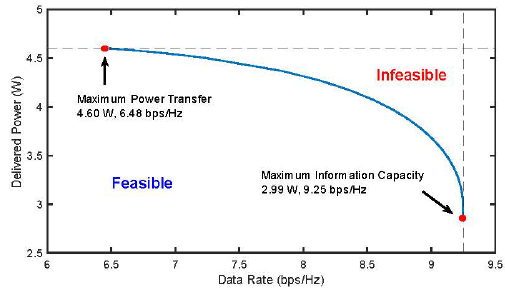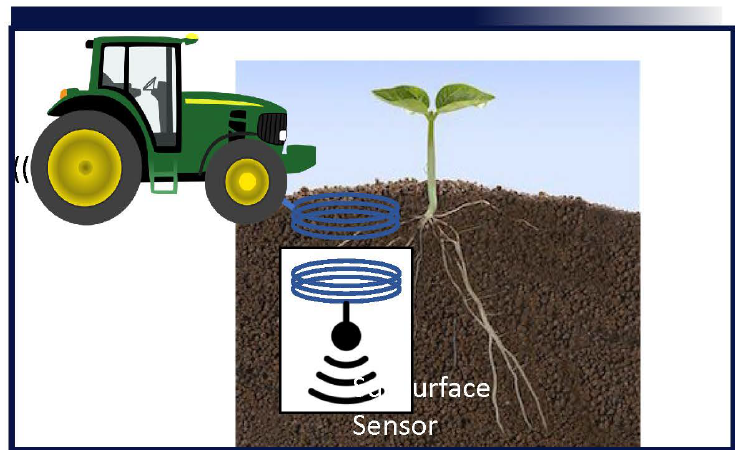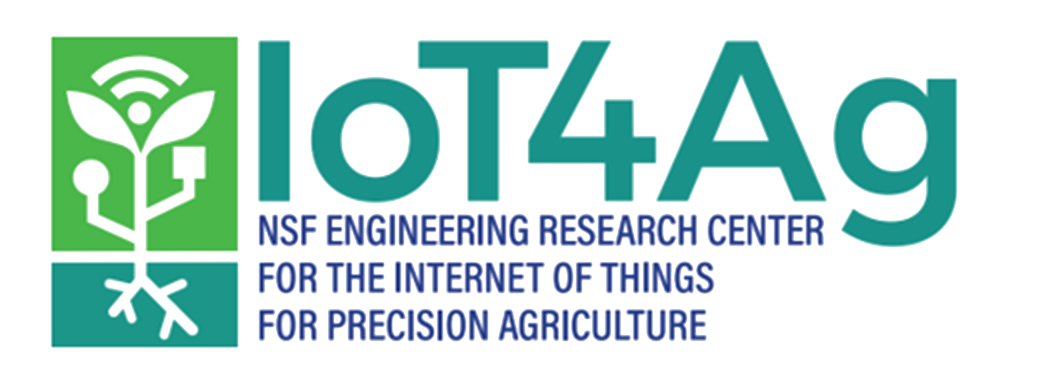Better Computing and Communication for Agricultural Sensors
Outcome/Accomplishment
Agricultural fields are typically located in rural areas with poor broadband coverage, and monitoring of crops is still accomplished primarily through the expensive, labor-intensive, and time-consuming process of manually sampling and documenting the state of the field. Researchers have developed a novel approach to efficiently power and record data from sensors using a distributed computing paradigm (called Edge computing) that brings computation and data storage closer to the data sources, improving response times and saving bandwidth. This research is being performed by a team from the NSF-funded Internet of Things for Precision Agriculture (IoT4Ag) Engineering Research Center headquartered at the University of Pennsylvania.
Impact/Benefits
IoT4Ag is working to develop and deploy an innovative and comprehensive suite of communications and energy technologies tailored to the diverse set of sensors, platforms, and environmental conditions found in agricultural fields. Currently, sensors used in agriculture rely on an ad-hoc collection of cellular (e.g., 3G, 4G, and 5G), low-power networks (e.g., Bluetooth), and wired infrastructure. None of these networks were designed with agricultural use cases in mind. 5G use cases also do not align with agricultural deployments. Integrated solutions for precision farming require Edge communication between the IoT sensors and the aerial- and ground-based robots and vehicles involved and their links to the mobile network. The new approach has many potential benefits, including addressing key communication and power limitations (Figure 1) of underground agricultural sensors and increasing their effectiveness at collecting geospatial in situ sensor data that are essential for agriculture and terrestrial ecology.
Explanation/Background
To advance its goal of ensuring food, energy, and water security, IoT4Ag is working to advance technology to increase crop production while minimizing the use of energy and water resources and the impact of agricultural practices on the environment. Precision agriculture involves using technology to acquire and analyze data from the field, which requires new approaches to overcome the limitations of communications infrastructure on the farm (Figure 2).
For this project, researchers employed an Edge computing architecture, placing computing services closer to the location of the data and giving users faster, more reliable services. Their innovative approach involved:
- Using a short-range wireless communication system that communicates by coupling a tight, low-power, non-propagating magnetic field between devices, rather than traditional "power beaming" where power is transferred by beams of electromagnetic radiation (e.g., microwaves or laser beams) which must be aimed at the receiver.
- Use of a multi-coil reader/charger in tractors and other agricultural machinery.
- Developing a multi-coil framework for communication and powering.
They also analyzed the tradeoff between communication and power transfer rates and determined that underground sensors can be more easily placed because they no longer have to be aimed at their receiver.
Location
Philadelphia, Pennsylvaniawebsite
Start Year
Microelectronics and IT
Microelectronics, Sensing, and IT
Lead Institution
Core Partners
Fact Sheet
Outcome/Accomplishment
Agricultural fields are typically located in rural areas with poor broadband coverage, and monitoring of crops is still accomplished primarily through the expensive, labor-intensive, and time-consuming process of manually sampling and documenting the state of the field. Researchers have developed a novel approach to efficiently power and record data from sensors using a distributed computing paradigm (called Edge computing) that brings computation and data storage closer to the data sources, improving response times and saving bandwidth. This research is being performed by a team from the NSF-funded Internet of Things for Precision Agriculture (IoT4Ag) Engineering Research Center headquartered at the University of Pennsylvania.
Location
Philadelphia, Pennsylvaniawebsite
Start Year
Microelectronics and IT
Microelectronics, Sensing, and IT
Lead Institution
Core Partners
Fact Sheet
Impact/benefits
IoT4Ag is working to develop and deploy an innovative and comprehensive suite of communications and energy technologies tailored to the diverse set of sensors, platforms, and environmental conditions found in agricultural fields. Currently, sensors used in agriculture rely on an ad-hoc collection of cellular (e.g., 3G, 4G, and 5G), low-power networks (e.g., Bluetooth), and wired infrastructure. None of these networks were designed with agricultural use cases in mind. 5G use cases also do not align with agricultural deployments. Integrated solutions for precision farming require Edge communication between the IoT sensors and the aerial- and ground-based robots and vehicles involved and their links to the mobile network. The new approach has many potential benefits, including addressing key communication and power limitations (Figure 1) of underground agricultural sensors and increasing their effectiveness at collecting geospatial in situ sensor data that are essential for agriculture and terrestrial ecology.
Explanation/Background
To advance its goal of ensuring food, energy, and water security, IoT4Ag is working to advance technology to increase crop production while minimizing the use of energy and water resources and the impact of agricultural practices on the environment. Precision agriculture involves using technology to acquire and analyze data from the field, which requires new approaches to overcome the limitations of communications infrastructure on the farm (Figure 2).
For this project, researchers employed an Edge computing architecture, placing computing services closer to the location of the data and giving users faster, more reliable services. Their innovative approach involved:
- Using a short-range wireless communication system that communicates by coupling a tight, low-power, non-propagating magnetic field between devices, rather than traditional "power beaming" where power is transferred by beams of electromagnetic radiation (e.g., microwaves or laser beams) which must be aimed at the receiver.
- Use of a multi-coil reader/charger in tractors and other agricultural machinery.
- Developing a multi-coil framework for communication and powering.
They also analyzed the tradeoff between communication and power transfer rates and determined that underground sensors can be more easily placed because they no longer have to be aimed at their receiver.


